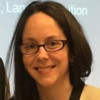Faculty Awards & Special Projects
Check back for more news and faculty awards!

2023 Outstanding Referee Award from the American Physical Society: Wolfgang Altmannshoffer and Howie Haber
Congratulations to Wolfgang Altmannshoffer and Howie Haber!
Two of our very own Physics faculty have received the 2023 Outstanding Referee Award from the American Physical Society!
The highly selective Outstanding Referee program annually recognizes about 150 of the roughly 88,600 currently active referees. Like Fellowship in the APS, this is a lifetime award. In this year, 2023, 153 Outstanding Referees were selected. Our Editors select the honorees based on the quality, number, and timeliness of their reports, without regard for membership in the APS, country of origin, or field of research. Referees are rewarded for their work carried out since 1978, the earliest year for which we have accurate data on referee reports returned. The decisions are difficult and there are many excellent referees who are still to be recognized. The honorees come from over 62 different countries. All listed in the table have been notified, offered the option of anonymity, and will receive a lapel pin and a certificate.
Congratulations, and perhaps more to the point, thank you to Howie and Wolfgang for this invaluable service to the field!.
 Michael Nauenberg has won a Reviewer Excellence award for the contributions he has made to the American Journal of Physics.
Michael Nauenberg has won a Reviewer Excellence award for the contributions he has made to the American Journal of Physics.See slides from Joel Primack's Physics Colloquium on 10/17/2019
Why Galaxies Start Pickle-Shaped: A Historical Introduction to Dark Matter and Galaxy Formation
According to modern cosmology, invisible dark matter and dark energy drive the
evolution of the universe – and astrophysicists are still working out the implications. Newton’s
laws explained why planetary orbits are elliptical, but not why the planetary orbits in the solar
system are nearly circular, in the same plane, and in the same direction as the sun rotates.
Laplace explained this as a consequence of angular momentum conservation as the sun and
planets formed in a cooling and contracting protoplanetary gas cloud. For similar reasons,
many astronomers once thought that galaxies would start as disks. But Hubble Space
Telescope images of forming galaxies instead show that most of them are prolate – that is,
pickle-shaped. This turns out to be a consequence of most galaxies forming in prolate dark
matter halos oriented along massive dark matter filaments. This colloquium will include
background on the 2019 Nobel Prize in Physics to Jim Peebles “for theoretical discoveries in
physical cosmology” [1] and the 2020 Lilienfeld Prize of the American Physical Society to Joel
Primack “for seminal contributions to our understanding of the formation of structure in the
universe, and for communicating to the public the extraordinary progress in our understanding
of cosmology” [2].
[1] https://www.nobelprize.org/prizes/physics/2019/prize-announcement/,
nobelprize.org/uploads/2019/10/advanced-physicsprize2019.pdf.
[2] https://www.eurekalert.org/pub_releases/2019-08/aps-aa2082719.php,
https://news.ucsc.edu/2019/09/primack-lilienfeld-prize.html. (See also Primack’s popular article
https://www.americanscientist.org/article/why-do-galaxies-start-out-as-cosmic-pickles.)
Check out the exciting collaborations of Physics lecturer Stephanie Bailey with Santa Cruz community members, UCSC students and local artists:
